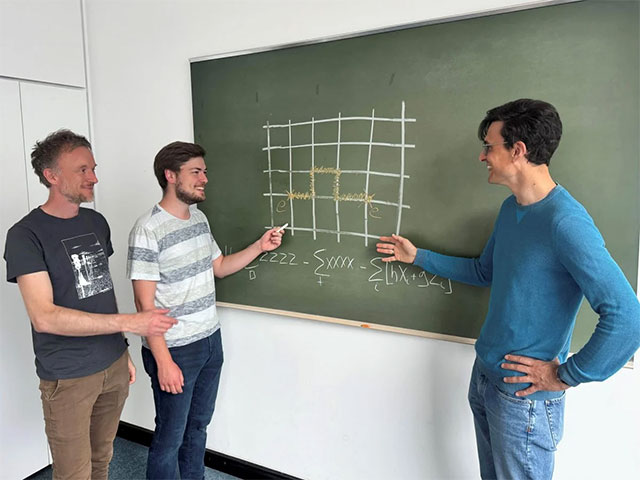Google uses quantum computers to discover the fundamental laws of the universe
Researchers have used Google's quantum processor to simulate fundamental physics, opening up a new approach to understanding the forces and particles that underlie the universe.
The fundamental forces that shape the world around us are explained through incredibly complex theoretical models. However, studying these models is a huge challenge, because simulating them accurately is far beyond the capabilities of traditional supercomputers.
Now, scientists from the Technical University of Munich (TUM), Princeton University, and the Google Quantum AI team have demonstrated that quantum computers can become powerful tools for exploring this challenging field, opening the door to observing the most subtle movements of the fundamental components of nature.
The research, published in the journal Nature , marks a major step forward for quantum computing. The team successfully used Google's quantum processor to directly simulate fundamental interactions, demonstrating the technology's enormous potential for future scientific discoveries. The approach could help scientists gain a deeper understanding of particle physics, quantum materials, and even the nature of space and time. At the heart of the work is the goal of decoding the universe at its most fundamental level, using mathematical frameworks known as gauge theories .

Testing the 'rules of the game' of the universe in the lab
' Our work shows that quantum computers can help humans discover the fundamental rules that govern the universe, ' said co-author Professor Michael Knap, a researcher at the TUM School of Natural Sciences. ' By simulating these interactions in the lab, we can test theories in completely new ways. '
' Taking advantage of the power of quantum processors, we studied the dynamics of a special form of gauge theory, and observed how particles and the invisible 'strings' connecting them change over time, ' said Pedram Roushan, co-author of the paper at Google Quantum AI.
' By adjusting the effective parameters in our model, we can 'tune' the properties of these strings. They can vibrate wildly, become tightly bound, or even break ,' added lead author Tyler Cochran, a graduate student at Princeton. Data collected from the quantum processor revealed unique behaviors of these strings that have direct parallels to phenomena in high-energy particle physics, he explained.
The research findings highlight the potential of quantum computers to advance scientific discoveries in fundamental physics and beyond.
You should read it
- New chip technology can enhance quantum computing
- For the first time successfully implementing underwater quantum teleportation, China took the lead in the quantum communication race
- Google Willow Unveiled: Unbelievably Powerful Quantum Superchip
- Google announced the most powerful 72-qubit Bristlecone quantum chip at the moment
- For the first time, scientists have successfully implemented quantum shifts between two chips
- Science has found evidence of the immortality of pseudo-particles: they replicate themselves after decay
 Webb Telescope Discovers Oldest Black Hole, Breaking Cosmic Record
Webb Telescope Discovers Oldest Black Hole, Breaking Cosmic Record Super-Earth suitable for life discovered 100 light years away
Super-Earth suitable for life discovered 100 light years away Scientists reveal the secret of the formation of a strange 'gas world' suspended in the universe
Scientists reveal the secret of the formation of a strange 'gas world' suspended in the universe Rare discovery: A giant planet is forming in a cosmic dust vortex
Rare discovery: A giant planet is forming in a cosmic dust vortex Massive eruption creates 250,000-mile-long 'volcanic canyon' on the Sun's surface
Massive eruption creates 250,000-mile-long 'volcanic canyon' on the Sun's surface The end of the Earth actually happened about 250 million years ago
The end of the Earth actually happened about 250 million years ago